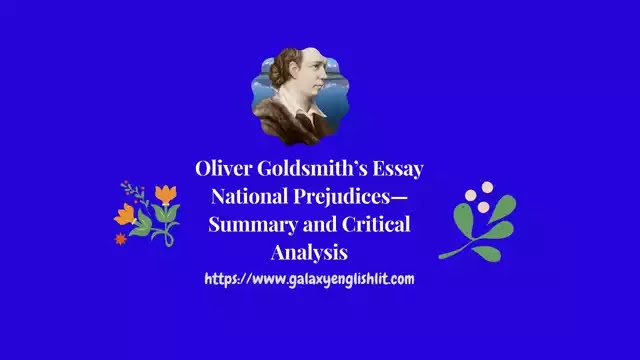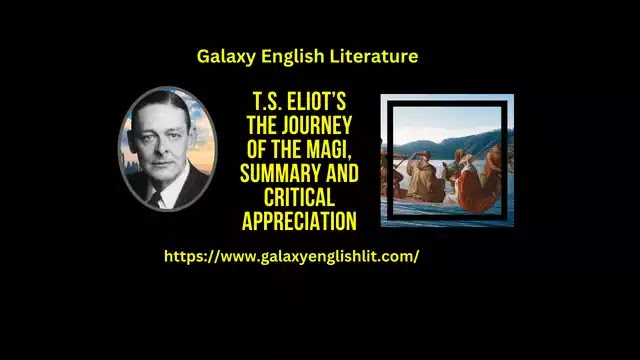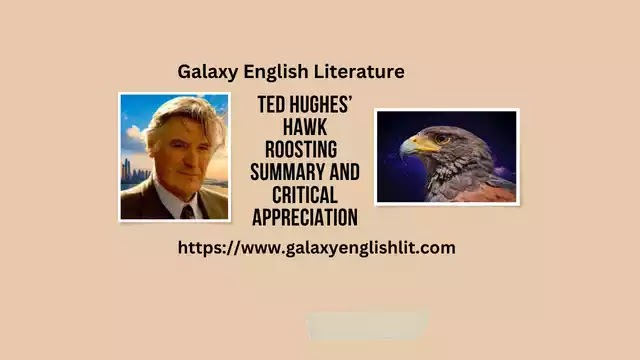Introduction:
It has been analysed that Yeats had two main methods of poetic creation-one spontaneous and the other a laborious process involving much alteration and substitution. In the early phases of his poetic career, he relied entirely on the magic of inspiration and gave himself up to "the chief temptation of the artist, creation without toil".
 |
| W.B. Yeats' Craftsmanship—Diction and Versification |
As he matured and grew, he mixed inspiration with perspiration and he adopted the method which requires constant labour, constant modifications and excisions. Yeats composed slowly painstakingly, showing his sincerity as an artist. Many of his poems were first planned in prose drafts which were then cast in poetic form. Yeats' poems have intensity and complexity of a careful artist, but this is true only of his mystic poems. His mythological and romantic poems are quite simple. Yet they are complex not in matters of language or diction but in respect of thought.
Employment of Metaphorical Aphorisms:
In some of his poems, Yeats employs the metaphorical aphorism which he had often employed in prose. Yeats' use of epigram, like Blake's is a properly poetic one, giving the reader a shock or surprise:
"Out of Ireland have we come.
Great hatred, little room,
Maimed us at the start."
The whole of the epigrammatic poem called The Four Ages of Man ends thus:
"Now his wars on God begin;
At stroke of midnight God shall win."
Song-like Ballad Rhythm:
The earlier poems of Yeats were remarkable for their dreamy sweetness and their tradition song-like ballad rhythm, whether they are in ordinary iambics, like The Song of Wandering Aengus or in the more haunting, curiously modulated cadence of The Lake Isle of Innisfree. In his later poetry, Yeats cultivates subtler, more varied, and more dramatically balanced cadences. The metaphors are fresher and taken from a wider range of reference and the imaginative structure is both more firmly wrought and more spontaneous and natural in effect. Yeats also released regular stanzoic poetry whether reflective or lyrical, from iambic monotony.
Great Master of Traditional Stanza Form:
Yeats was always a great trickster with words, but now there is something more solid beneath the guilding. The poems entitled The Tower (1928) and The Winding Stair (1933) show Yeats' mastery of technique. Perhaps none of any time has written stanzas at once so rich in music and so compact in thought and phrase. Diction and rhythm are happily wedded to their subject. When he chooses he can put the starkest facts into the starkest words:
"It seems that I must bid the Muse go back,
Choose Plato and Plotinus for a friend."
"And aged man is but a paltry thing,
A tattered coat upon a stick." (The Tower)
His Great Control of Language; Structurally Organised Unity:
In the poem The Second Coming, the lines are stirring, separately and in their smaller groups. The choice of words is appropriate so as to reveal or represent the emotion which is the poem's purpose. The words deliver the meaning which was put into them by the craft with which they are arranged. Sailing to Byzantium has two parts which divide the poem precisely in half, the first two stanzas presenting art as inanimate, the second two as animate. Within these two halves of the poem, further divisions may be found. Coinciding with the stanzoic divisions. Among School Children is structurally organised around a series of parallel trinities. The development of thought in Lapis Lazuli is perfectly logical. A Prayer for My Daughter is held together by a set of wind and tree images which are remarkable.
Avoidance of Ornamentation and Decoration:
Ornamental and decorative words and phrases have been discarded in the volume entitled Responsibilities. The fable-poems in this volume entitled The Grey Rock, The Three Beggars, The Three Hermits, and The Hour before Dawn, are dry, unromantic pieces. In them everyday sometimes colloquial, diction is blended with terms of speech which come out of the poetic tradition. In A Coat, Yeats decides to discard his romantic material and to walk naked. He did not, indeed, reject 'embroideries' altogether but from now on they are employed more sparingly and to better advantage. The verse, in this volume, recognises the actual world in its rhythm and diction.
An Individual Singing Note:
Yeats' lyrics are not songs, but their words have a musical lilt. The musical note in his verse is not imposed. It grows naturally from the words themselves which are carefully chosen with reference to their sense and sound both:
"Though now it seems,
As if some marvellous empty sea-shell flung
Out of the obscure dark of the rich streams,
And not a fountain, were the symbols which
Shadows the glory of the rich."
In the above passage, musical resonance and the turning of sensation into sounds have become a sort of conjuring trick. When at his best the lightness of song generates from assurance more than from simplicity.





